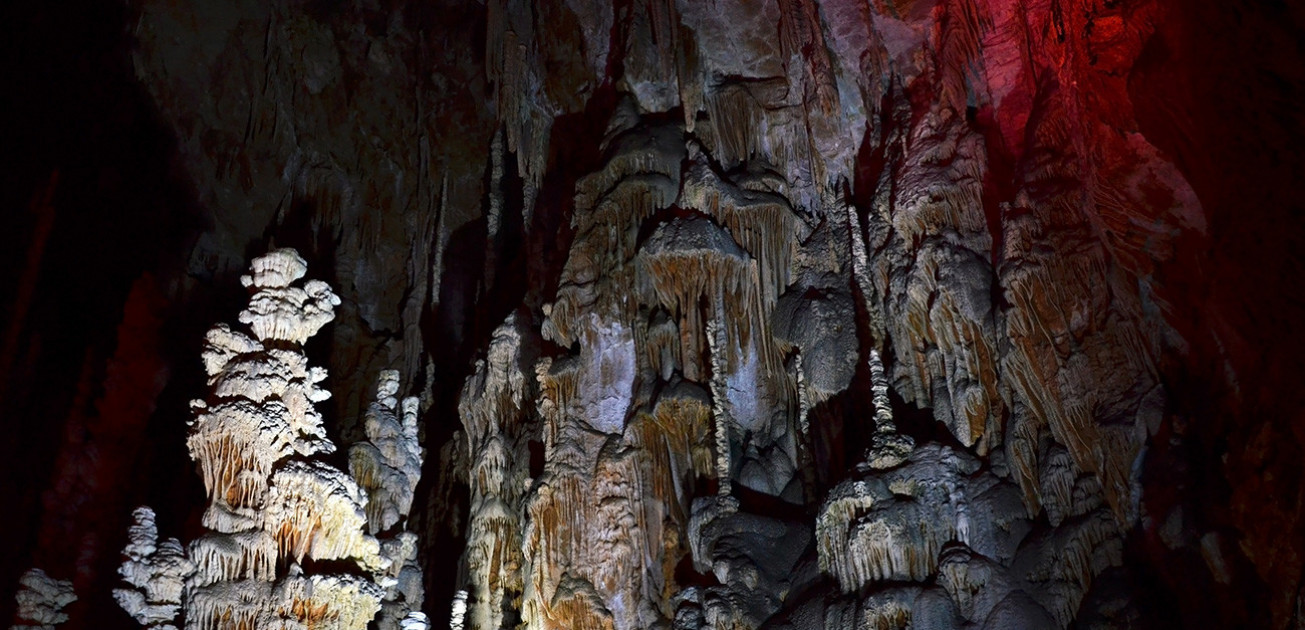


"Our world’s caves are places of wonder, mystery and majestic beauty. Show caves around the world are embracing their role in protecting and preserving caves and providing a place for people to learn about these special, natural, cultural and historical resources.
Show caves also play another important nature tourism role of sustainable economic development, providing jobs, and helping the economy of their regions.”
| Name: | Ministry for Rural Development, Speleological Department |
|---|---|
| Name original: | Ministry for Rural Development, Speleological Department |
| Type of member: | Full member |
| Country: | Hungary |
| Town / City: | H-1025 BUDAPEST |
| Number of visitors: | 0 / per year |
| Phone: | +36.1.325.9503-4 |
|---|---|
| Fax: | +36.1.3259509 |
country: Hungary
Abaligeti-barlang (Abaliget cave) is the largest and best-known cave of the Mecsek Mountains. It is a show cave, a popular excursion site, and also used for speleotherapy. The cave system is 1,750m long and consists of a central passage and two side passages.
The cave is entered through an active cave passage, 38m long and 6m wide. This passage is filled with 75cm deep water. The walls show spectacular corrosive and erosive forms, but little speleothems. This changes completely with the following main passage, which is full of impressive dripstones. The highlight is the Great Hall with its fine speleothems.
At the entrance of the cave is the Denevérmúzeum (Bat Museum) located. This museum is also a bat research station and is dedicated to the study of the local bats. 41 different bat species were found in the cave, 19 of them live continually in the cave. The most common bats are Lesser Horseshoe Bat (Rhinolophus hipposideros) and Greater Horseshoe Bat (Rhinolophus ferrumequinum). Both are lised on the IUCN Red List of Threatened Species. The bats are studied on this location since 1923. Abaliget is rich in fauna, the most famous Troglobiont is Stenasellus hungaricus, a blind crab.
country: Hungary
Anna Barlang (Anna Cave) is located in the small town Lillafüred, in a park with a waterfall. It is a small tufa cave, a primary cave which was formed by the deposition of the tufa from limestone rich water. A 40m thick travertine deposit was built up by the Garadna Stream during the last 150,000-200,000 years, but only in the warm perods between the Ice Ages. Pine needles, twigs, and mosses which have been incrusted by the limestone form very special fossils. The limstone cruste is a perfect negative of the original plant while the plant itself is long rotten away.
The cave was discovered at the beginning of the 20th century, when a 94m long water tunnel was dug. The Hungarian poet Sándor Petöfi opened the cave, but it was soon forgotten. When the Palace Hotel was built above, 34 small cavern were conected and opened as a show cave in 1927.
country: Hungary
country: Hungary
The spa of Miskolc-Tapolca is a karst cave with a hot spring inside. The water has 31°C and contains calzium-magnesium-hydrocarbonate, jodine, bromine, fluorine, radon, and carbon dioxide. It is heated inside the karst body and emerges in this small cave. The minerals are dissoluted from the rocks.
The spring was known (and definitely used) for a very long time. Some remains from the stone age tell us that alread early man used the cave. In the Middle Ages the spring was supervised by the monks of a nearby benediktine abbey.
Today there is a modern spa, with cave pool, sauna, outdoor swimming-pools, and sun-terraces. There are medical treatments, the therapeutic effect of the water is good against physical exhaustion, pain in the joints and muscles, and infections of respiratory system, stomach or intestines.
country: Hungary
Lóczy barlang was formed by thermal springs waters rising through Mid Triassic limestones. The solution processes forming the cave left the typical solution pits in floor and walls. The thin horizontal limestone layers are clearly visible and give the cave a strange character. There are little dripstones, but a few rare speleothems formed by the thermal water, like aragonite. Small bulbous aragonites are locally called pea-stones.
Lóczy barlang was named after the famous scientist Lajos Lóczy (1849-1920) renown for his work on Lake Balaton.
country: Hungary
country: Hungary
country: Hungary
The Tettyei Mésztufa-barlang (Tettyei Tufa Cave) is a rather new attraction of Pécs, although the show cave was already open for the public in the early 20th century. It was named Gateway to Hell and dragon hanging from the ceiling was the main attraction.
Closed for a very long time, the cave has now been reopened. The dragon is still there, but the cave also has an interactive display on various related topics.
This cave is pretty young: it is less than 10,000 years old and was formed as a primary cave during the deposition of the tufa. The melting waters of the Ice Age flowing through the limestone dissolved limestone underground and redeposited much of it right at the spring. During this process numerous rooms and passages were formed simply by irregular growth. The resulting net of only partly connected cavities was later utilized by man. Artificial connections were created and rooms enlarged. The soft rock allowed to work the walls with pick and shovel.
During the Middle Ages the tufa hill was used to build a castle on top, called Tettye castle. The cave was named after the castle and obviously became a part of its fortification.